An amazing documentary from National Geografic exposes the plight of Kerala’s temple elephants.
Every year from December through May, the state of Kerala, in southern India, experiences a frenzy of religious ceremonies. Millions of people participate in the festivities, which honor various gods. At the center of these celebrations are hundreds of captive elephants, ornately decorated and paraded around temples and along Kerala streets.
But behind the pageantry, the Kerala elephants endure “hell,” as Sangita Iyer, the director and executive producer of the documentary Gods in Shackles, puts it. The film details the lives of the temple elephants.
Kerala has some 600 captive elephants, the vast majority males. Iyer says these animals are shackled, tortured, beaten, or starved on a daily basis. Between 2012 and 2015, 175 died and this year eight have perished, Iyer says, including a temple elephant named Keshavankutty.
The 55-year-old tusker had pulmonary disease and digestive disorders and was denied a proper diet and veterinary care. According to Iyer, the elephant was so hungry he was seen eating sand two days before he collapsed and died.
For those who monitor the temple elephants, Keshavankutty’s death comes as no surprise. ”Elephants kept for cultural and religious reasons live in perpetual fear of being punished,” says Suparna Ganguly, president of the Wildlife Rescue and Rehabilitation Center (WRCC) in Bangalore. Ganguly has kept tabs on the elephants for decades, and WRCC has rescued 10 of them. “They’re nonhuman reminders of the violence and degradation of slavery in the West and bonded labor in the East,” she says.
But elephant owners say that using captive elephants in Kerala’s religious ceremonies is integral to the region’s cultural heritage. They’ve asked that the festivals be protected.
In an emotional interview, Iyer—who was born in Kerala but now lives in Toronto, Canada—talks about her personal odyssey in making the film, the brutality she witnessed, and how mistreatment of the elephants is sanctioned under the name of God.
The making of this film was unexpected. You’d returned to Mumbai for the anniversary of your father’s death and during that visit saw a wild elephant struggling for his life. The experience profoundly moved you, and a conservationist friend said he could show you what these elephants are “really” used for.
Yes. When I returned to Toronto, my friend said he’d send me materials about the temple elephants. At first I was excited. I thought the information was going to be amazing, but it was shocking—I was shattered like a broken glass.
So I saved up every penny I could. I bought a basic camera because I was a videographer when I was a broadcast journalist and returned to Kerala in December 2013. My friend took me to temple after temple after temple. I was horrified. Every elephant I saw—these majestic male tuskers—were completely enslaved. They’d surrendered to these puny human beings. [Begins to sob.]
And I kept thinking: What could have taken your power away? What could have broken your spirit so much? You are so strong and huge, why are you not retaliating? As I was thinking this, I was also filming them, trying to maintain my composure while I saw their feet, their ankles covered in deep wounds, all four legs heavily shackled. No food. No water. They had huge tumors on their hips, wounds near their tusks. I was so naive. At the time I didn’t realize that all of these abuses were deliberately inflicted.
How are the elephants used in the temple festivities?
There are many districts around Kerala, and within each there are cities and towns. And each temple in these cities or towns has different festivity dates. The temple is in the middle of a piece of land. Between the temple and the outer wall there’s a space where the elephants gather and where the public convenes to watch the spectacle. During festivities the elephants are forced to walk around the temple three times and then brought before the altar, or in front of the temple. Then they’re forced to bow down. Already there are three or four men on top of elephants. When they bow down, a heavy plaque is put on them. Altogether, the elephants carry about 500 pounds on their delicate spine.
But the elephants don’t stay at one temple—they’re “rented” and shuffled from temple to temple.
Yes. Between December and May there are hundreds of festivities based on the Hindu astrological calendar, culminating in the Thrissur Pooram. The elephants are trucked in absolutely precarious conditions and within a day transported to two or three festivities. The more the elephants participate, the more the owners are paid. For example, at 8 a.m. an elephant will be at one temple, then at 11 he’ll be at another, then at 3 PM he’ll be trucked to another. In the process the elephants are deprived of their basic necessities of life.
You describe the Thrissur Pooram as the “mother of all festivities.” What role do the elephants play?
It’s a 36-hour nonstop festivity that starts at 10 a.m. Thechikkottukavu Ramachandran is the star who inaugurates the ceremony. He’s actually killed more than 20 people and three other elephants, but he’s still used. And during Thrissur Pooram, about 95 bull elephants are trucked in from various parts of Kerala and convene in the heart of Thrissur town. They’re then paraded in the streets for 36 hours nonstop under the scorching sun, on hot tar roads, and only intermittently given food and water. At night they’re still paraded.
The whole time, three or four men are mounted on their backs, and the elephants are heavily shackled on their legs. Meanwhile, people are standing near them in close proximity—it’s chaotic, absolutely insane. It’s a sea of people that you can see for miles on end. Then at night they shoot off fireworks.
I’ll never forget watching an old blind bull who was shackled beneath a makeshift temple, and only 300 yards away they were blowing off these high-decibel fireworks. The noise was so loud it shattered the roof of the temple. Imagine how terrible this was for the elephant! Elephants are very sensitive, their feet and trunk can feel even the most subtle seismic vibrations.
Are these all Hindu temples in Kerala?
I’m so glad you asked that. Hindus, Christians, and Muslims—all of them use elephants. But it originated in Hindu temples, and other religions followed suit because they didn’t want to be left behind. But nothing in Hindu scriptures says that elephants are needed in these festivities.
Who owns the elephants?
That’s complicated. The elephants are actually owned by private citizens as well as temples. The way the temples come to own them is when a group of devotees or one devotee makes an offering—they’ll buy an elephant and donate it to the temple.
But these elephants frequently come illegally from the wild. The Wildlife Protection Act of 1972 states that elephants are Schedule 1 animals and should be provided absolute protection. The elephants in Kerala are often transported illegally from places like Assam or Bihar—the law clearly says that no wild elephants can be transported between states. Neither the central nor state governments are doing anything at all about it because there are so many layers of bureaucracy and corruption.
So you have the individual elephant owners, temples that own elephants, temples that don’t own elephants, and then a broker in between who will liaise and coordinate what elephants will go to which festivals so they can generate as much revenue as possible.
You’ve written extensively about making Gods in Shackles in your Huffington Post blog. One post was about a temple elephant named Vedakkumnathan Ganapathy who killed his mahout. He was then captured by his handlers and tortured in front of hundreds of people. Is this common after an elephant “runs amok”?
It’s the same scenario every time. When the elephants run amok, they’re captured and tortured. They’ll be inflicted with the worst form of barbaric torture, using the worst form of prohibited weapons to discipline them. We have lots of undercover footage in the film that exposes this brutality.
A 20-year old elephant named Chitillapilly Rajashekaran was ritually beaten to death earlier this year. You describe the ritual, which is called Katti Adikkai, as “the cruelest of rituals that defy all holy books.”
What will happen, usually, is that the musth period goes on for three to four months in bull elephants. [Musth is when bulls experience a surge of hormones and become very aggressive.] In the wild they wander for miles on end, and that’s how they burn their energy. In captivity they’re shackled even more severely—both rear legs and at least one front leg. Their owners also starve them to intentionally deplete their energies.
When the elephants come out of their musth, the mahouts believe the elephants have forgotten their commands. So seven or eight men usually beat the living daylights out of the animal for 48 to 72 hours. They use weapons like the bull hook and long poles that have pointed metal spikes on the ends.
Remember all those wounds I mentioned that I first saw at the temples in 2013? Those are from the Katti Adikkai. They’re beaten continuously to shatter this animal’s spirit—and every year, every single captive bull elephant in Kerala endures this.
Will anyone get punished for any of these deaths?
No. Owning elephants has been illegal, and regulations go as far back as 1879 when they introduced the Elephants Preservation Act. In the past few decades the illegal activities have only intensified because Asian elephants have become an endangered species. And with the depleting supplies, demand has increased dramatically. This, despite the fact that these iconic animals are India’s heritage animal.
But regardless, these intelligent, sensitive animals are captured, trained, and exploited for profit illegally with impunity. Just in March 2016 the Kerala state government discovered more than 289 elephants without ownership certificates, but it granted the owners amnesty. This has been rejected by the Supreme Court of India.
Many of those involved with the elephants are men—the mahouts, presumably those who own the temples, the captors. Are there any prominent men in India working to stop this practice?
Many prominent Hindu priests are speaking out against the brutality inflicted upon the temple elephants, and in fact I’ve interviewed one of the most revered priests of Kerala who condemns the use of elephants in festivals. Many temples in Kerala are also realizing the devastation for both humans and elephants and have begun to use chariots instead.
There are very few female temple elephants. But you followed one named Laskshmi. Tell us about her.
We filmed Lakshmi to feature a day in the life of a temple elephant. Every day, she’s woken at her owner’s home at 4 a.m. Her mahout brushes her and bathes her in a tank with contaminated, stagnant water. Then she’s given just a scoop of leftover rice. She’s then hassled to temple in shackles—her only exercise. She performs her rituals at 7:30 a.m., then again at 9:30 and does her circuit rounds with pilgrims following her. She’s then taken home and shackled between 12 and 4 p.m. She’s taken back to the temple for her evening rituals at 6:30 and 7:30. Then she’s shackled again at her owner’s home.
Laskshmi is very special to you, isn’t she?
First of all she’s a female. Watching her shackled and tortured … in front of my eyes, I was reminded of my own cultural confinements and so many restrictions. Women are subjugated—they don’t have the same kinds of rights in India. I was born and raised in Kerala in a Brahmin family with strict parents and had no freedom. I came to believe I was inadequate and as a woman could not be successful, and my role is to be subservient. It was only when I moved to my adopted home of Canada that I tasted freedom.
When I looked at Lakshmi [begins to sob], and I looked at her size, she’s so strong, so powerful she could have squashed these mahouts to death in a matter of seconds, and I thought, Have you forgotten your true potential? At one point I remembered I’d forgotten my own true potential. In many regards she helped me reconnect with my true nature. Every day I think of her and feel guilty, knowing she is still shackled and suffering so much.
You suggest that because this is all done under the name of God, it is sanctioned.
The paradoxes are stark. On the one hand you have a nation that worships elephants as the embodiment of Lord Ganesh [a Hindu god with the face of an elephant], and on the other hand they’re torturing and exploiting them for profit under the veil of religion. They justify their exploitation by twisting the meaning of the holy Hindu scriptures. The vast majority of people in India are unaware of the deception. We’ve received the green light from the Central Board of Film Certification in India [to show the film], and the Indian audience will one day be watching Gods in Shackles,and they will decide for themselves the truth. What they decide is to be seen.
Gods in Shackles was a finalist at the International Elephant Film Festival. Public screenings begin in the United States next month. You can watch the trailer here.
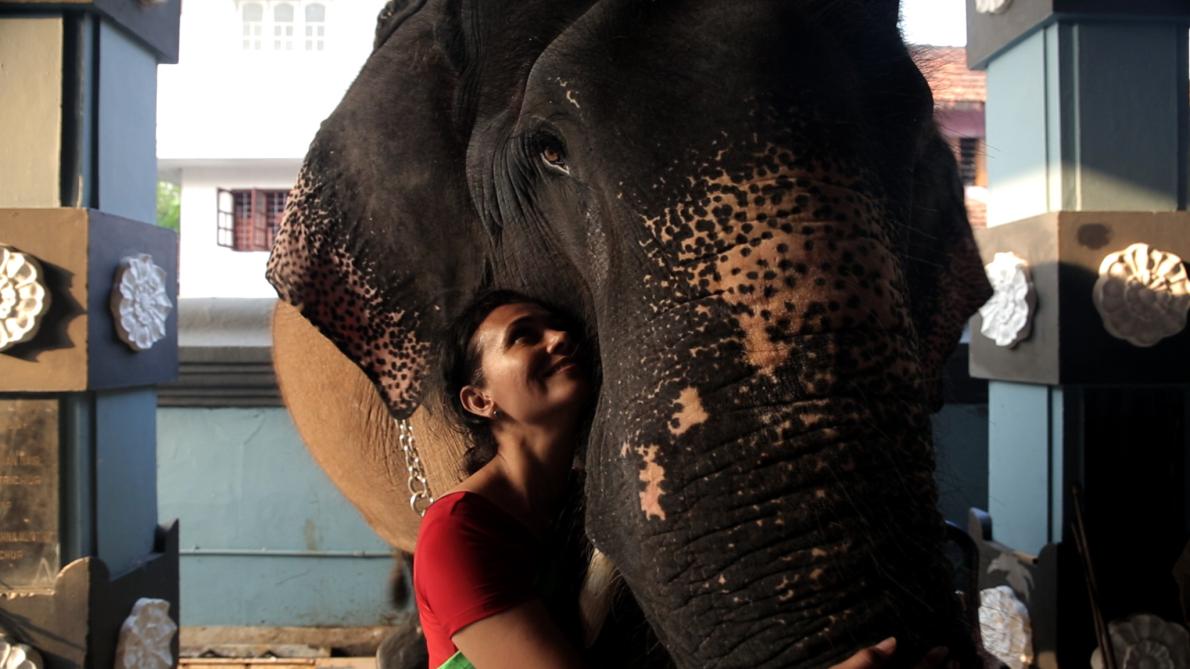
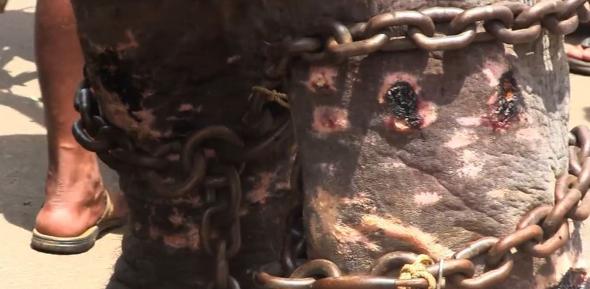
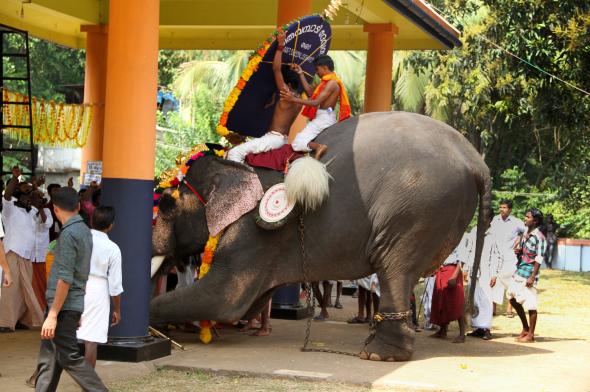
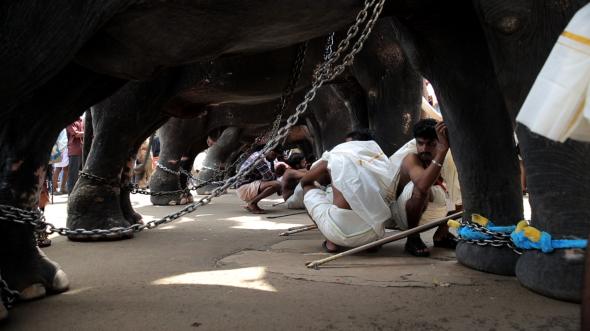
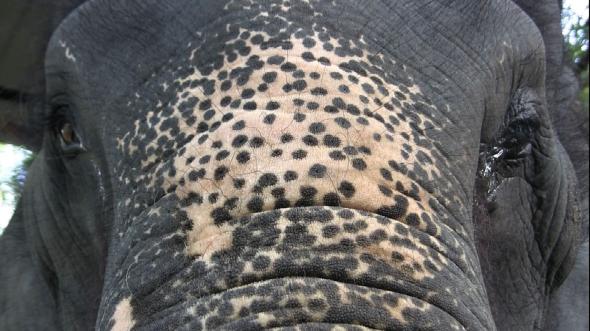
Nice article.
Your article writing manner is so helpful for me to write for http://yibration.com
Thanks!
Hello there, I found your blog by way of Google while searching
for a comparable matter, your web site came up, it looks great.
I have bookmarked it in my google bookmarks.
Hi there, just was alert to your weblog through Google, and
located that it is really informative. I’m going to be careful for brussels.
I will be grateful in the event you continue this in future.
Numerous folks will likely be benefited from your writing.
Cheers!
Thanks